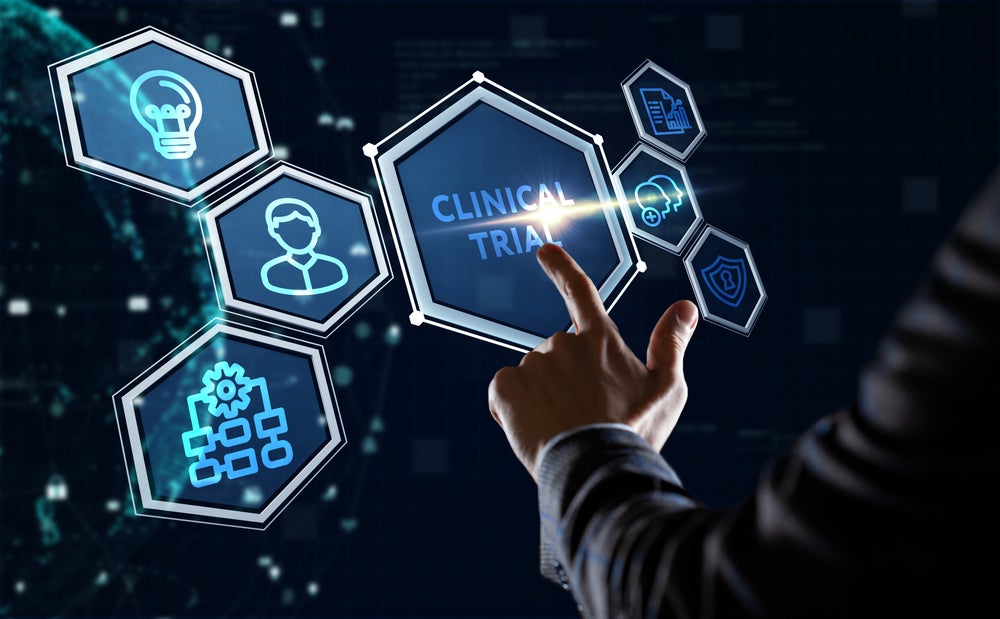As technology continues to advance, businesses of all kinds are striving to seek a competitive advantage as they implement new innovative approaches that redefine age-old processes. Oftentimes, firms find themselves behind the curve playing catch up due to an intentional hesitancy to think outside the box. This is especially true for Research & Development (R&D) in biotech and pharmaceutical companies. There remain significant opportunities for astute firms willing to take the plunge with a well-crafted execution plan geared at minimizing risk and maximizing return on their investment. The failure to recognize and leverage new innovation in technology isn't necessarily a lost opportunity for firms since the reality is that eventually everyone will be forced to adapt or risk becoming irrelevant. The pivotal question may very well be how flexible and scalable your current operations are. Is it a case that your processes to quickly adjust and incorporate new innovative technology aren't adequate? Importantly, can the use of these technologies help you attain your goals while progressively increasing productivity and efficiency at a lower cost?
In the clinical supply space, once such trend creating much havoc for trial supply managers over the past decade has been globalization.Clinical studies are becoming more global for a number of reasons including:
- Studies are becoming increasingly complex
- The rise in study activities leads to intense competition in well established markets
- Significant upsurge in study cost – leading teams to explore other regions as a cost saving measure
This in turn results in:
- Study team having to comply with more regulatory standards
- Longer lead time and more complex logistics and distribution channels
- Having to cope with the lack of infrastructure in less developed market to bridge disconnect within the study team and reaching the patients
Innovations in technology may provide some solutions to enable us to meet some of those challenges. According to findings in a 2015 Ericsson Mobility Report1, it is projected that 90 percent of the populated globe will have high-speed mobile data access by 2020. This is made possible by initiatives such as Project Loon by Google; whose mission is to provide internet access to rural and remote regions of the globe, laying the groundwork for a robust global data infrastructure. Some of the advantages include:
- Increase visibility by connecting all functional areas within the study
- Reduce errors by eliminating manual tasks and utilizing more networked device for data capture
- Enable patient connection by leveraging mobile devices, applications and networking technologies
- Drive innovation by enabling implementation of available technology solutions globally
Admittedly, trends in globalization may not be new, nevertheless, there continues to be significant challenges in new and underdeveloped markets. Global networking capabilities and data access provides a platform from where we can envision a future in which revolutionary ideas and solutions are made possible. Let’s consider for a moment the success of the smartphone and how it has become such an integral part of everyday life; would this have been the case had there not been a networking and data infrastructure in place?
Or take mobile and cloud technology: is the hype really true, and if so, how does it benefit trial supply delivery and monitoring? In a paper Beyond Accuracy: What Data Quality Means to Data Consumers authored by professor Richard Wang and Dian Strong, they proposed four dimensions to assessing information quality: accuracy, relevance, interpretability and accessibility. If we examine mobile and cloud technologies within these dimensions, we can better understand the role of each individually and how together they enable real-time data to ensure on the spot management of clinical supplies.
How well do you really know your competitors?
Access the most comprehensive Company Profiles on the market, powered by GlobalData. Save hours of research. Gain competitive edge.

Thank you!
Your download email will arrive shortly
Not ready to buy yet? Download a free sample
We are confident about the unique quality of our Company Profiles. However, we want you to make the most beneficial decision for your business, so we offer a free sample that you can download by submitting the below form
By GlobalDataSee Also:
1) Accuracy
- Mobile: can be used for real-time data capture which minimize data error
- Cloud: integrates multiple data source to a central repository which ensures IQ across all functions
2) Relevance
- Mobile: enables preference base notification and alerts relevant to a functional role
- Cloud: enables customize data view and feeds relevant to a functional role
3) Interpretability
- Mobile & Cloud: enables application base solutions for data interpretation including multiple different standards and language
4) Accessibility
- Mobile: enables sending and receiving data instantaneously and can be used as a cloud client to access and leverage cloud resource
- Cloud: can easily transition to other resources to minimize service interruption and downtime and compatible across multiple platforms
Mobile technology is ideal for networking with other devices and systems to provide updates, reducing manual task and serving as client system. Cloud based technology on the other hand is great for the data integration and sharing capability it provides. However, as we’ve seen, together they are an invaluable resource to ensuring the data quality necessary to providing real-time visibility across the supply chain, which enables agile decision-making for on the spot management of clinical supplies.
In 2016 I visited Guyana a country located in South America. The most surprising thing I noticed was how popular mobile devices were, in a country with a population, many of whom had never owned a laptop or desktop willingly embracing this mobile trend. It is worth noting that the wireless data infrastructure was almost none existent in 2009 during my previous visit and is somewhat subpar in 2016 compared to what we are accustomed to in the US. Nonetheless, it seems as though this aura of endless possibility provided by mobile devices is the primary driver or as the saying goes, "There is an app for that!” That observation is by no means an isolated incident, as evidenced in a 2014 study by Ericsson Mobility1, which claimed there were 2.6 Billion smartphone users globally. That figure is projected to increase to 6.1 billion users by 2020, meaning 70 percent of the population will be using a smartphone. Incredibly 80 percent of this increase will come from the Asia Pacific, Middle East and African regions.
The potential of smartphones should not be taken lightly. In fact NASA revealed in a 2009 that the processing power in a cellphone is greater than that of the computers used in the moon mission2. The technology in smartphones has redefined what was possible in cellphone and handheld mobile devices. With the use of these devices projected to rise exponentially in the coming years, there are significant opportunities for biotech and pharmaceutical firms and vendors to develop patient-centric application solutions to:
- Enable patient access to are source database from which they can retrieve, view and share their health records electronically
- Create a social forum in which patients can participate to receive support and pertinent information
- Proactively engage with the patients including monitoring, receiving updates and providing feedbacks
Such applications will not only provide a medium for which to communicate in real-time with past, current and prospective patients but will also enable the clinical supply team to better understand and respond in real-time to changes affecting supply and demand.
As studies becomes more globalized, study teams are scattered across the globe, sites and patients are further apart creating disconnect within the study. As we have seen application based solutions is one option to eliminate the illusion of space in the supply chain. It enables us to connect directly with the patients and receive real-time updates.
I recall my excitement back in 2010 when Steve Jobs took to the stage to introduce the first iPad. That excitement was soon overcome by thoughts of why anyone would be inclined to purchase a tablet? It did not replace my smartphone and wasn’t quite a practical laptop replacement. The app selection was few and they were not optimized for a large screen device. The graphics were not great and I found the performance subpar at best, especially for the price. Maybe I was too quick to judge, since a strong argument can be made that tablets may soon cause the demise of the laptop computers as we know it.
I was not so naïve, when wearables became main stream a few years back. Even though they were for the most part a consumer gadget, I had no doubt that businesses would find creative ways to capitalize on their potential, as they did previously with tablets. It may be even safe to say that the practical use of wearables is significantly higher than that of previous mobile devices. This is primarily because they are app based with networking connectivity, and has processing capabilitywith hands free use. When it comes to wearable devices it may be easier to list the areas in which it cannot be applied. From a clinical management perspective, application and benefit may include an increased efficiency with distribution operations, increased accuracy, and shipment scanners. Additionally, there’s the reduction of manual tasks and errors in regards to automated data upload, as well as hands free operation, which increases safety regardless of the application.
A buzz word over the past decade or more has been globalization and rightfully so, since it is no longer possible for any business or industry to shield itself from this trend.The benefits to be gained from globalization are immense and possibly the primary catalyst for why it is the new reality.Nonetheless, there still exists a significant hurdle, which must be overcome to fully capitalize on these benefits and develop a competitive advantage.Innovations in technology provide solutions which may enable us to meet some of those challenges.However, it takes vision, commitment and reliable partners working together to overcome obstacles in the path of success with globalization. If we reflect on the quote “Genius is one percent inspiration, ninety-nine percent perspiration” – Thomas A. Edison. Knowing what to do gets us 1 percent of the way, knowing how to do it and actually do it is the other 99 percent. And if it was easy everyone would be doing it.
At Janssen Clinical Supply Chain our mission is very much patient-centric with a vision of “Transforming Clinical Research into innovative solutions to meet our customers’ needs”and a goal to “Reliably deliver medicines to our patients with best in class speed & flexibility”.We recognize the value of innovation in executing our vision and attaining our goals.As such we actively participate and encourage participation in initiatives, including:
- TransCelerate BioPharma: a non-profit organization focused on advancing innovation in R&D
- Clinical Trials Transformation Initiative: mission is to develop and drive adoption of practices that will increase the quality and efficiency of clinical trials
- Multi-Regional Clinical Trials: engages diverse stakeholders to define emerging issues in global clinical trials and to create and implement ethical, actionable, and practical solutions
“As competition intensifies the need for creative thinking increases. It is no longer enough to do the same thing better … no longer enough to be efficient and solve problems” — Edward de Bono
*Rey Bacchus is the Clinical Trial Supply Manager at Janssen
References
EricssonMobilityReport – https://www.ericsson.com/news/1925907
Do-It-Yourself Podcast: Rocket Evolution – http://www.nasa.gov/audience/foreducators/diypodcast/rocket-evolution-index-diy.html





